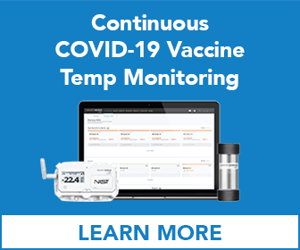Explore solutions built for your industry
Our customer-proven solutions monitor medications and food inventories for some of the most recognizable names in the industries of healthcare, food service, and transportation, and logistics. See how our solutions adapt to your industry needs.
SEE SOLUTIONSKroger Health Strengthens Compliance Visibility with SmartSense
Watch The VideoLEARN
Questions? Call +1 (866) 806-2653 to speak to our experts.
Schedule demoQuestions? Contact us.
Call +1 (866) 806-2653 to speak with our experts or get started with a demo.
CONTACT USAbout Us
SmartSense was created to use the power of the Internet of Things (IoT) to help our customers protect the assets most critical to the success of their business.
See our storyCONNECT. PROTECT. RESULTS.
Questions? Call +1 (866) 806-2653 to speak to our experts.
Schedule demoPlease select your login
June 14, 2017
Maintaining Vaccine Potency in the Supply Chain
 What is the vaccine cold chain? The short answer is: the maintenance of a temperature-controlled environment to ensure vaccines are transported and supplied in optimal condition. The cold chain begins with the refrigerated storage unit at the manufacturing plant, extends through delivery by distribution vehicles to the provider facility, to storage at the pharmacy or hospital, and ends with administration of the vaccine to the patient.
What is the vaccine cold chain? The short answer is: the maintenance of a temperature-controlled environment to ensure vaccines are transported and supplied in optimal condition. The cold chain begins with the refrigerated storage unit at the manufacturing plant, extends through delivery by distribution vehicles to the provider facility, to storage at the pharmacy or hospital, and ends with administration of the vaccine to the patient.
Appropriate conditions must be maintained at every link. Otherwise, failure to store, handle, and transport vaccines properly can reduce their potency, resulting in inadequate immune responses in patients and poor protection against disease—let alone, a waste of time and money for the pharmacy.
Assuring vaccine quality and maintaining the cold chain is a shared responsibility among manufacturers, distributors, and healthcare providers across 4 key areas: storage and handling, distribution, arrival, and administration.
Let’s take a closer look at each one.
Storage and Handling
Although manufacturers, distributors, and providers each have their own specific operations and agendas, they all share a common responsibility: To maintain optimal vaccine temperatures when stored in refrigerated units and handled by staff.
Every establishment should create detailed and up-to-date written protocols for routine and emergency vaccine storage and handling. This plan should consider all procedures that staff must adhere to during daily operations, such as:
- Ordering and accepting vaccine deliveries
- Monitoring the temperature of vaccines
- Managing potentially compromised vaccines
This plan should be available in writing and easily accessible as a reference for all staff members.
Distribution
Under the larger umbrella of distribution, shipping usually refers to transportation of vaccines by the distributor to the provider, while transport refers to moving vaccines between provider locations.
Shipping
Allowable shipping times vary among distributors, and are dependent on the type of container the vaccine is stored in. One easy way to check if the shipping time was over-extended is to consult the shipping insert. If the shipping time was above the allowable limits, distribution employees are responsible for immediately notifying a supervisor.
Transport
CDC discourages regular transport of vaccines between provider locations, since each move increases the risk that vaccines will be exposed to sub-optimal storage conditions. That said, there are times when transport is necessary in an emergency. Providers are therefore responsible for implementing standard operating procedures (SOP) ensuring that all vaccines are:
- Attended at all times during transport to maintain the cold chain
- Not placed in the vehicle trunk
- Delivered directly to the facility
- Promptly unpacked and placed in appropriate storage units on arrival
Arrival
Providers are responsible for proper storage and handling of vaccines from the moment they arrive at their facilities. Office staff untrained in the importance of temperature monitoring should not be given these duties. That’s because deliveries must be examined immediately to check if they are at proper temperatures.
If a monitor indicates a sub-optimal temperature during shipping or transport, the reading should be documented for future reference. If the integrity of a vaccine is in doubt, it should be labeled “DO NOT USE,” and promptly quarantined from other vaccines.
Administration
Properly preparing vaccines for administration is the final link in the cold chain, and the responsibility of providers. Remember, it’s better not to vaccinate than to administer a dose of vaccine that has been mishandled.
Two simple rules guide vaccine administration: 1) Prepare vaccines only when ready to be administered. 2) Administer vaccines only that have been prepared. These rules ensure patient safety. Other best practices include:
- Preparing vaccines in a designated area away from potential contaminants
- Preparing and administering the vaccine by a single employee
- Discarding any opened single-dose vials that have not been used
For more details about the vaccine cold chain, visit the World Health Organization (WHO) website.
Subscribe to Our Blog!
Subscribe to our blog to get weekly email updates about quality and safety issues important to the pharmaceutical industry.
Subscribe to the SmartSense Blog
Stay up-to-date on the evolution of IoT connectivity.
CONNECT. PROTECT. RESULTS.
Learn how our complete critical
environment monitoring solution will help you
connect and transform your business.
Call +1 (866) 806-2653 to speak with our industry
experts or get started by
requesting a demo.